
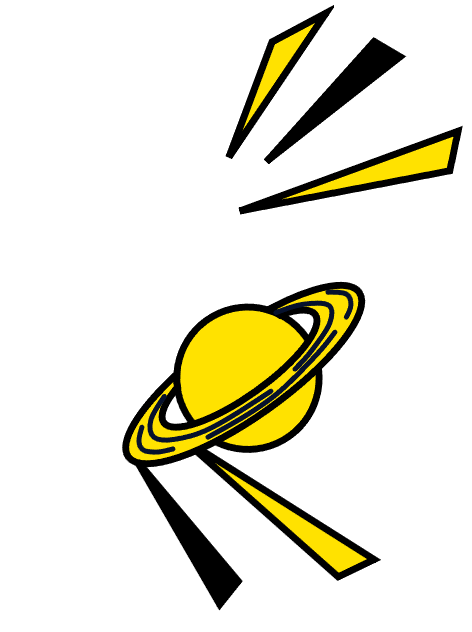
Botany
Solution
This is a metapuzzle for the Greenhouse round, with these puzzles and answers:
| Make Your Own Metapuzzle | GARAGE SALE |
| Flora on Fauna | MALACHITE |
| Behold, a Puzzle | POLICY |
| In Due Course | SEDATIVES |
We will transform these feeders in 3 stages that roughly correspond to transcription, translation, and protein folding to get the final answer.
Transcription (RNA Splicing)
We see 12 images of scissors next to strands of RNA that have been cut. The longer strand has a bigram above the two nucleotides next to the break. These bigrams all uniquely belong to one of the 4 feeders. We want to cut the feeders and take the smaller, non-noted substring (any extra letters are discarded).
| Bigram | Matching feeder with visual break | Number of nucleotides in smaller strand | Substring |
|---|---|---|---|
| AG | gar AGesale | 3 | GAR |
| CY | poli CY | 2 | LI |
| CY | poli CY | 3 | OLI |
| HI | malacHI te | 2 | TE |
| LE | garagesa LE | 2 | SA |
| MA | MA lachite | 3 | LAC |
| PO | PO licy | 3 | LIC |
| RA | gaRA gesale | 2 | GE |
| TE | malachi TE | 3 | CHI |
| TI | seda TIves | 2 | DA |
| TI | sedaTI ves | 2 | VE |
| TI | sedaTI ves | 3 | VES |
Translation
We get pairs of substrings that we can combine to make plant names. This is suggested by the title being Botany, that the round has been in a greenhouse, and that we’ve been cutting RNA. Then suggested by the flavor text, we take the scientific names of these plants. In length-order of the scientific name,
| OLI+VE | Olea europaea |
| GAR+LIC | Allium sativum |
| LI+LAC | Syringa vulgaris |
| SA+GE | Salvia officinalis |
| DA+TE | Phoenix dactylifera |
| CHI+VES | Allium schoenoprasum |
At this point, we need to have the “denatured proteins” (strips of paper) to proceed. These can be discovered by unlocking the safe in the Cargo Room. After unlocking the safe and seeing Matt & Emma pick up the proteins, if we proceed back to the greenhouse, we can see that the puzzle page has been updated to include the proteins.
These scientific name lengths match the lengths of the strips, which confirms we are on the right track.
Protein Folding
We then write the letters on the strips and cut the strips out. We note that the strips are ordered by length, and the numbers on the symbols are in numerical order of appearance, so these facts can be safely ignored for the rest of the solution.

The red lines on the strips correspond to canonical origami folds – dashed-dot lines represent mountain folds, and dashed lines represent valley folds. We get the following 6 shapes in the diagrams below. For visual clarity, the blue shaded cells are facing away from us and are not visible; all the numbers are oriented right-side-up (which suggests that this is the correct orientation).
| Colored side up | White side up for posterity |
|---|---|
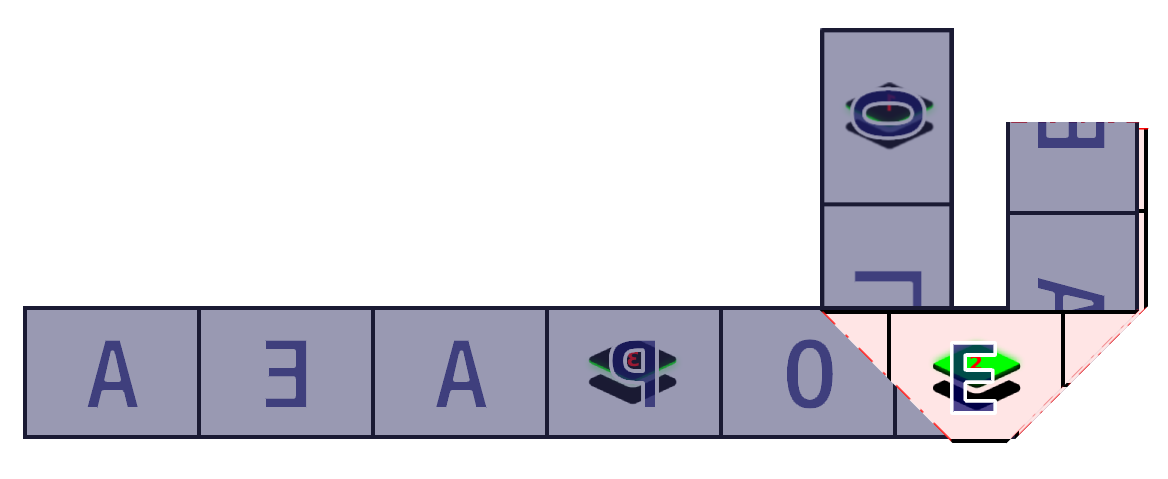 | 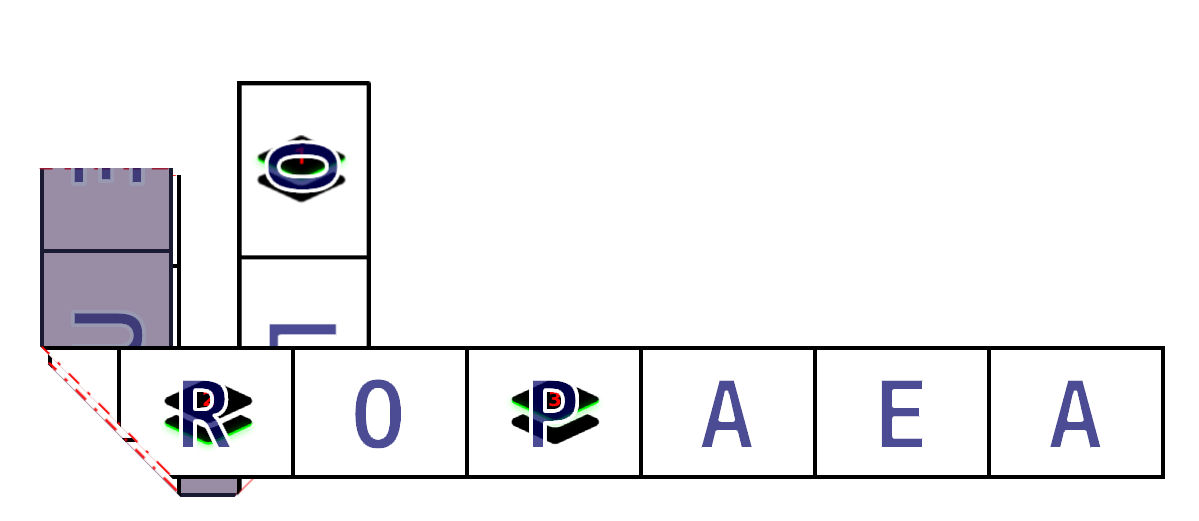 |
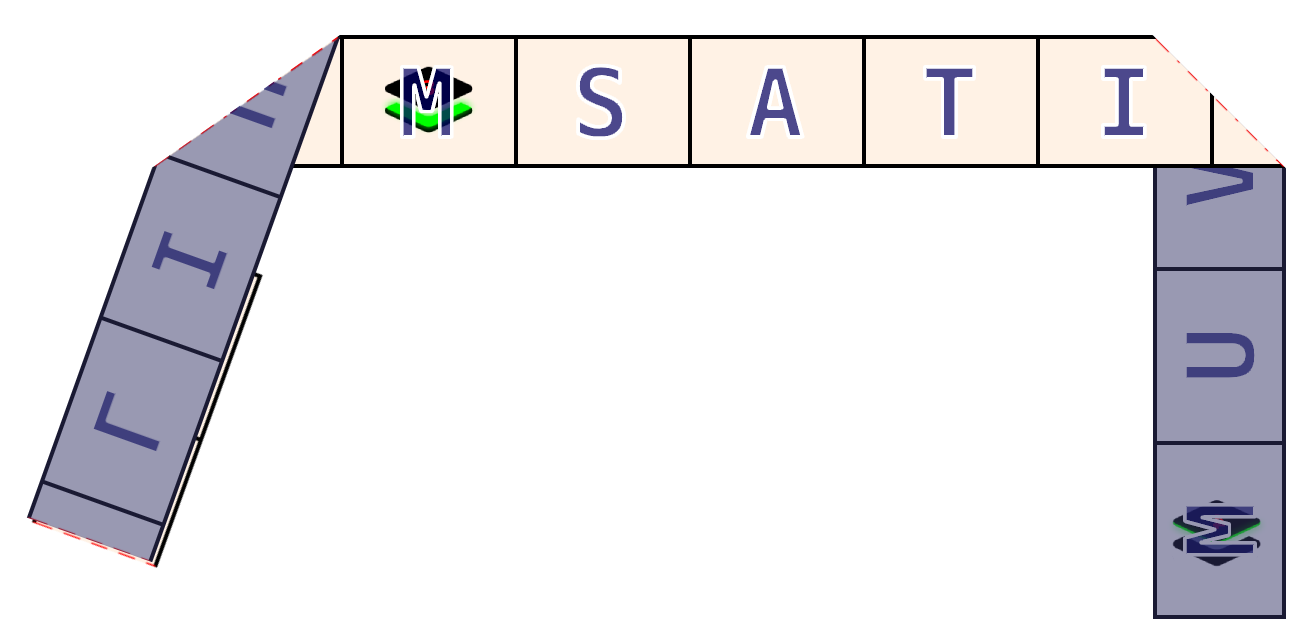 | 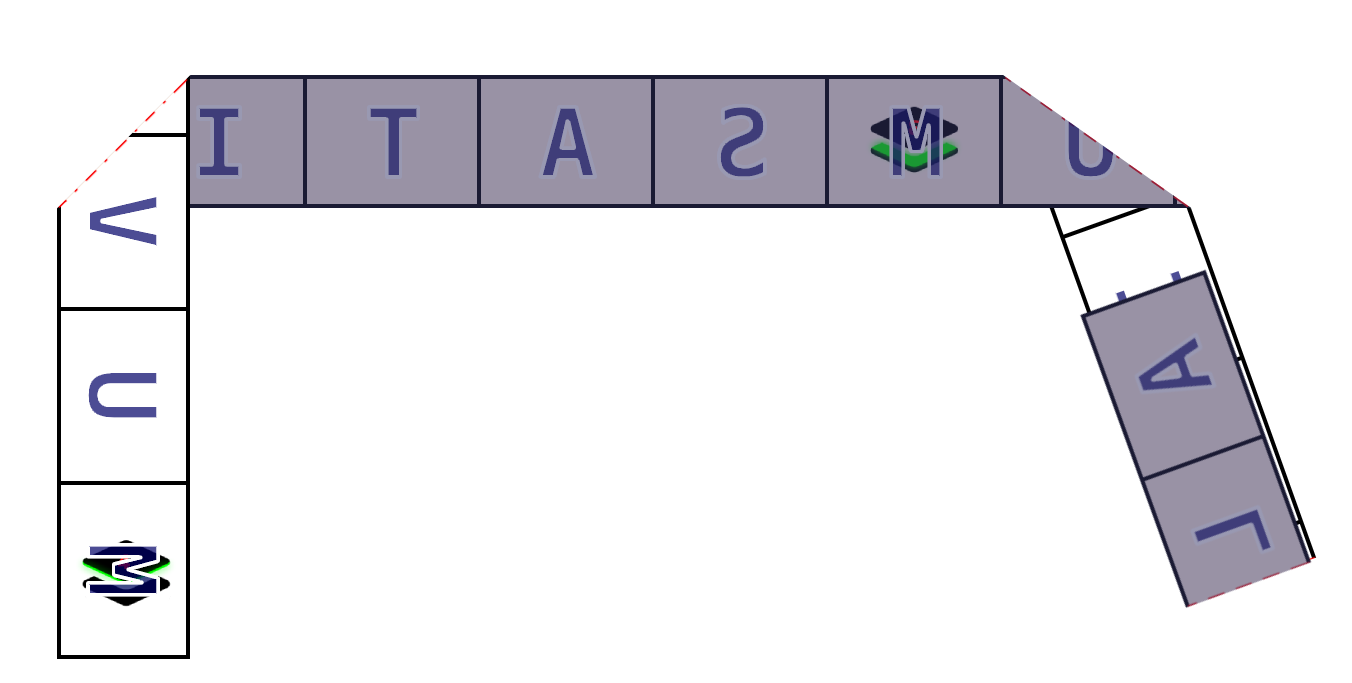 |
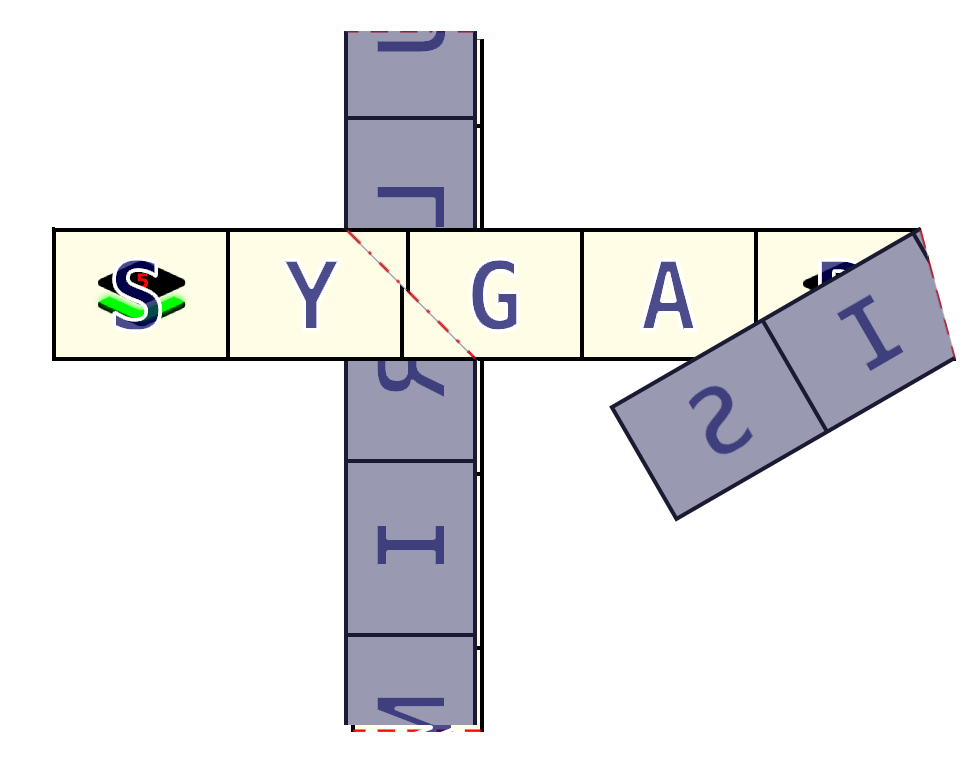 | 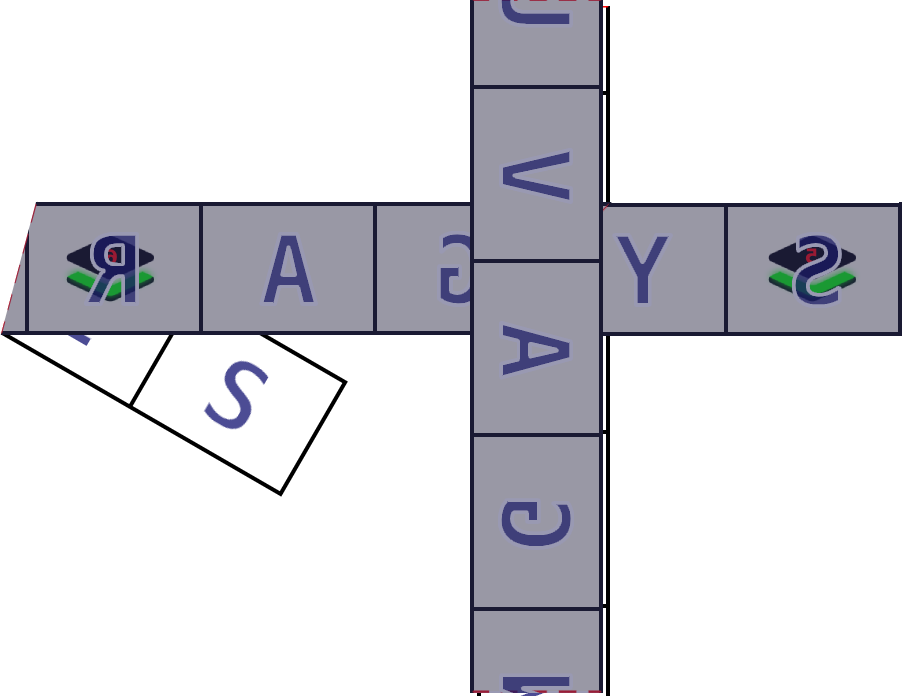 |
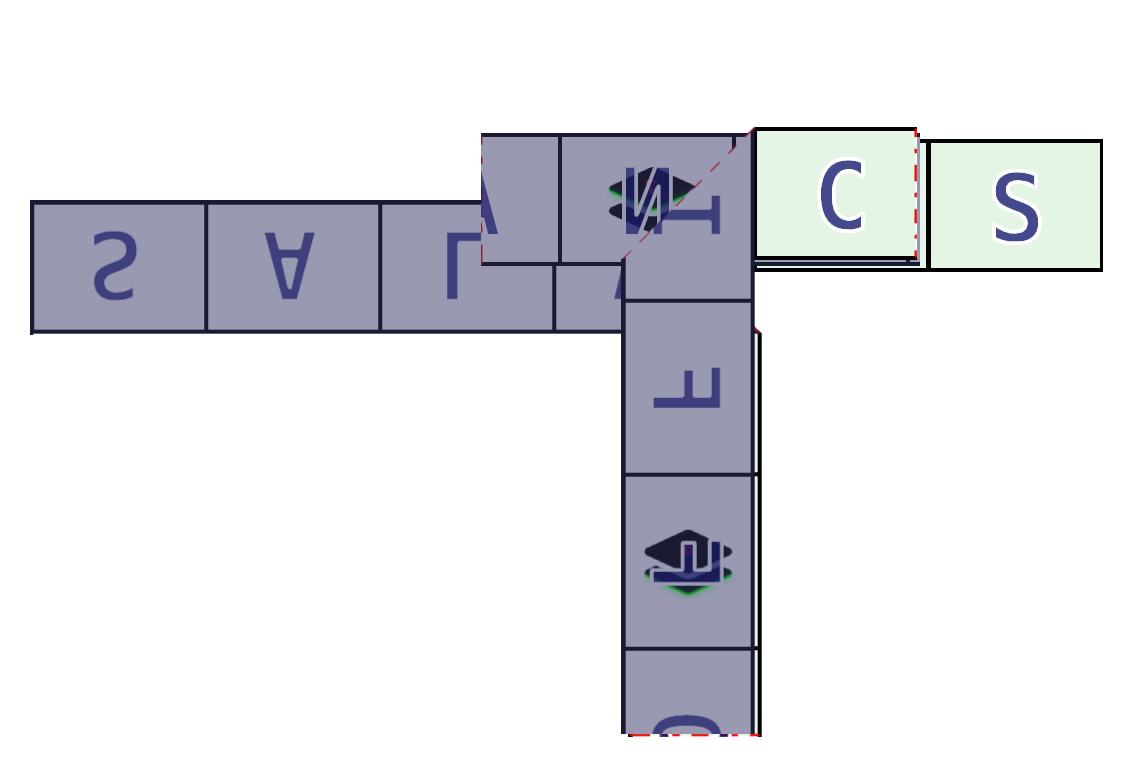 | 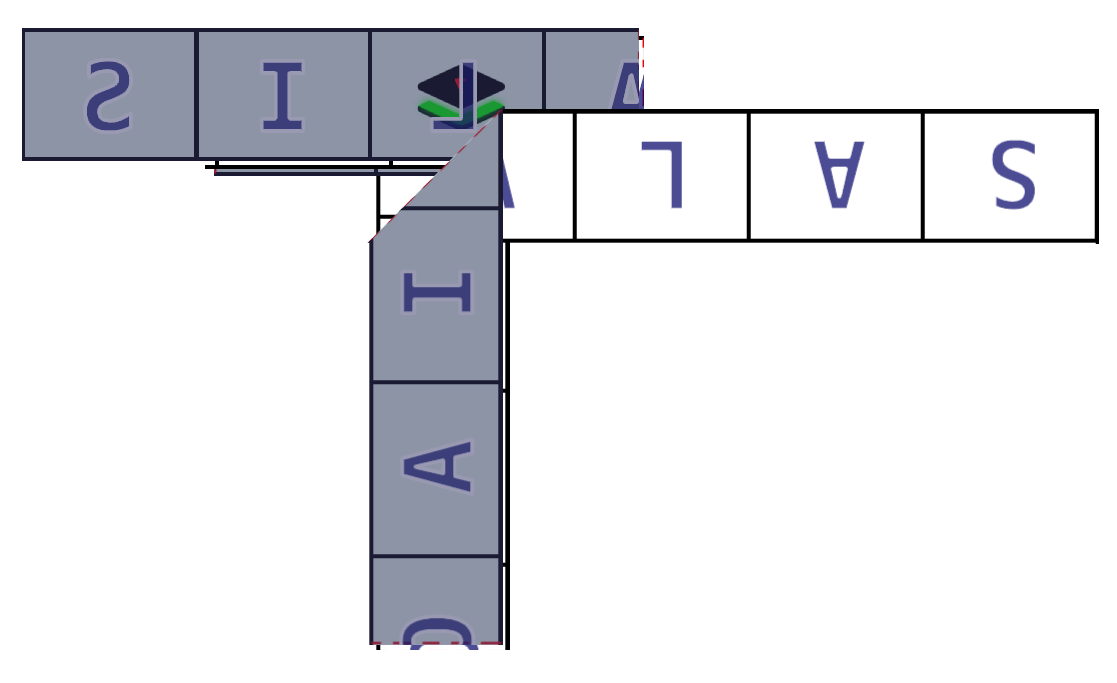 |
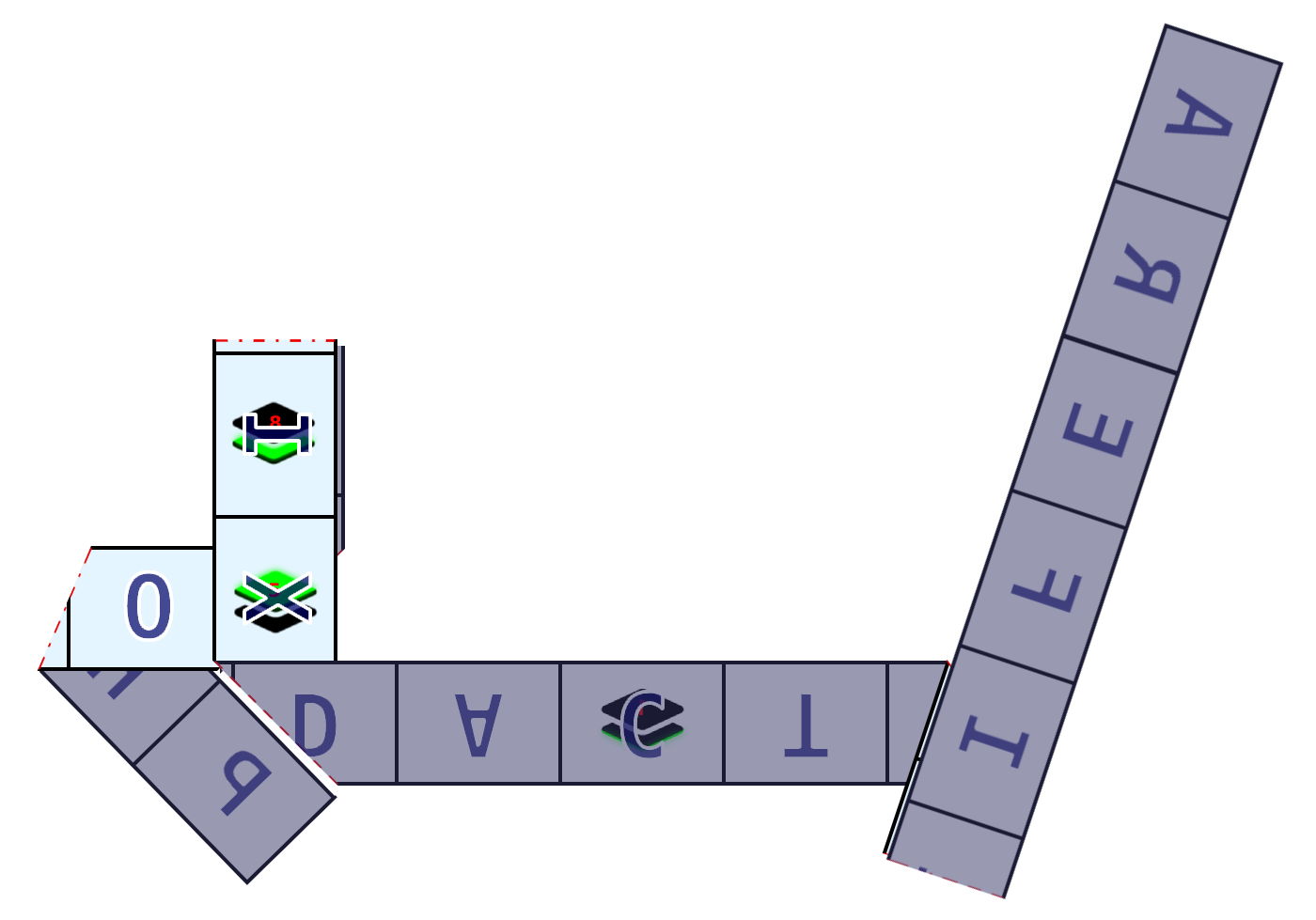 | 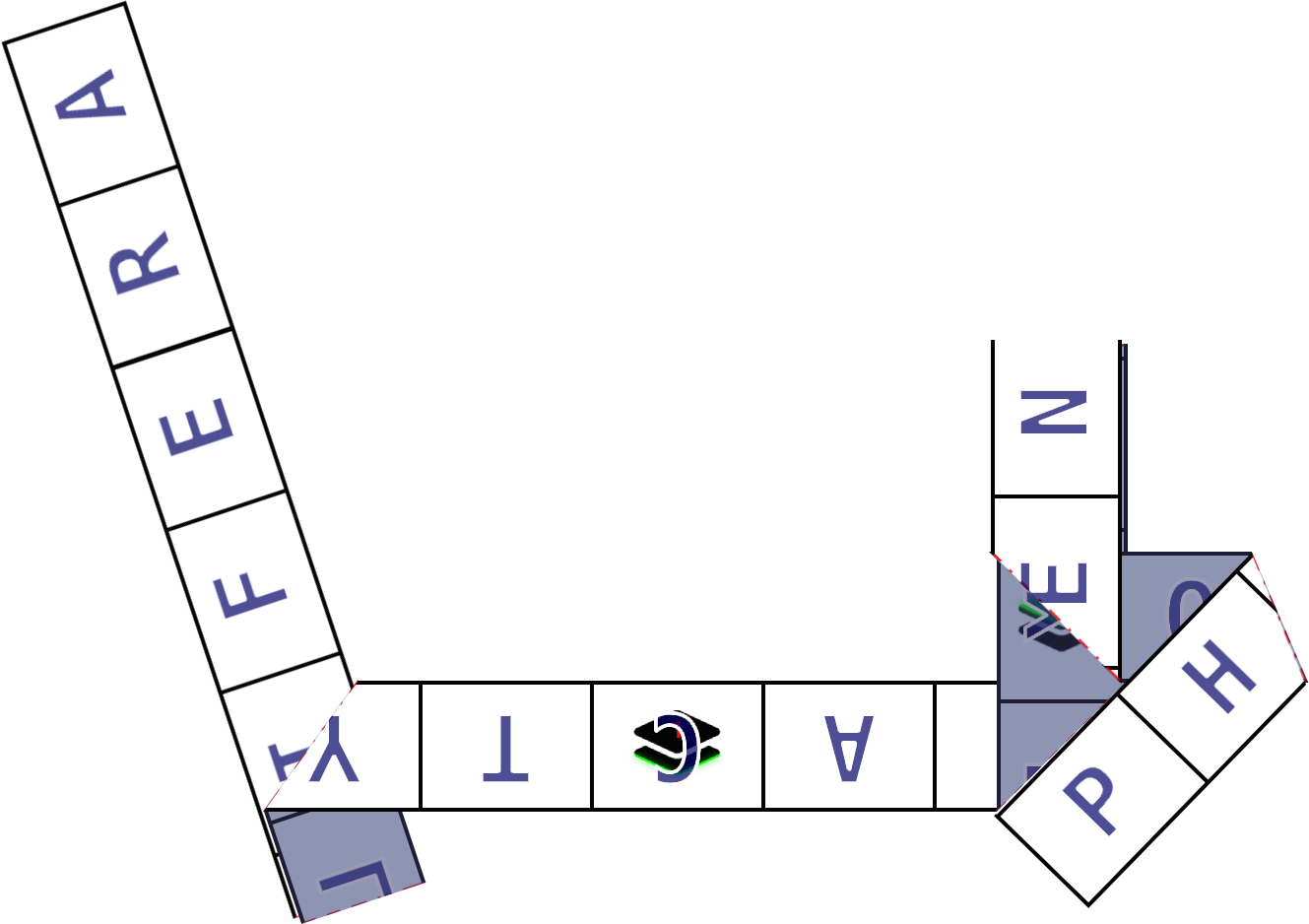 |
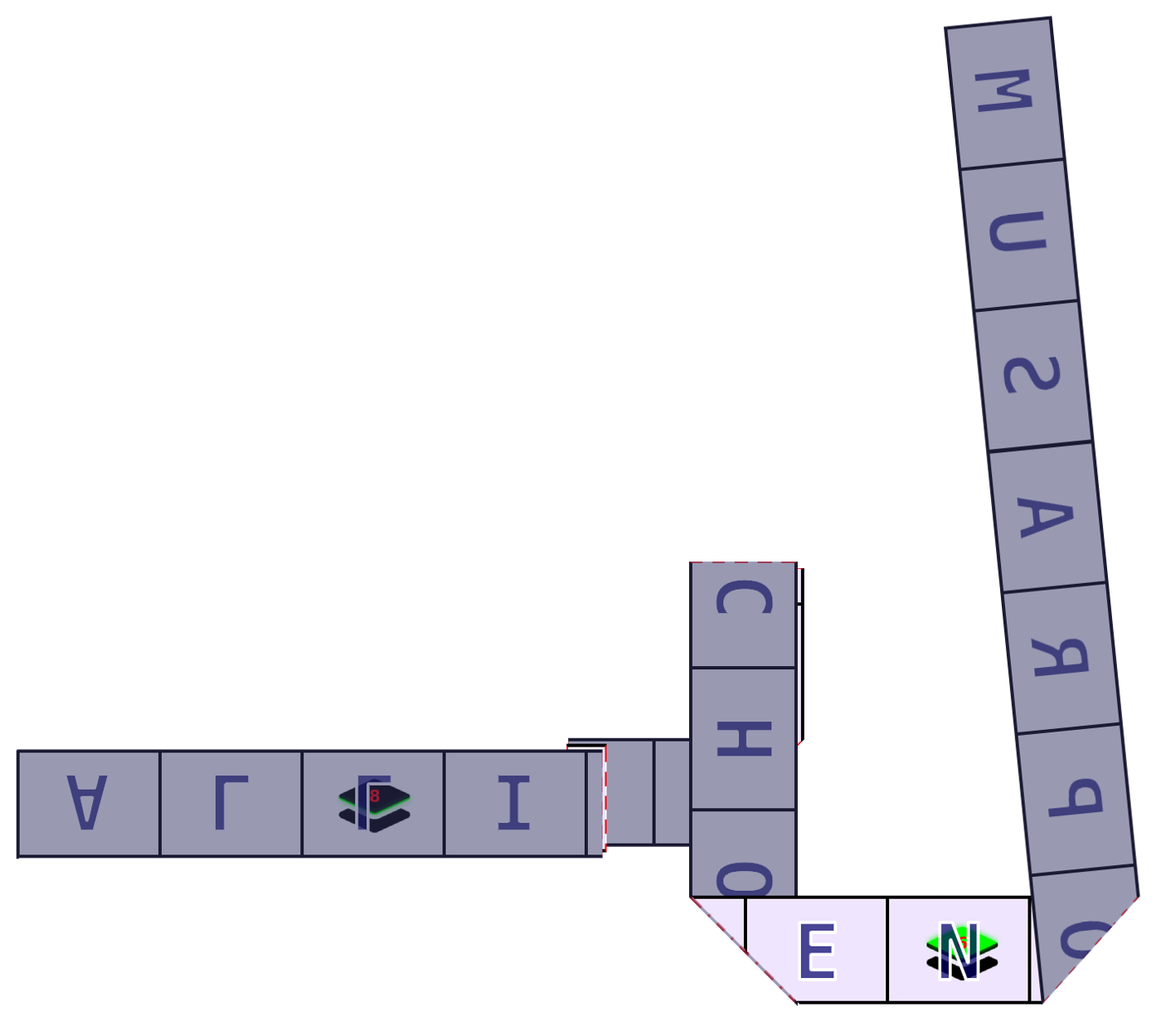 | 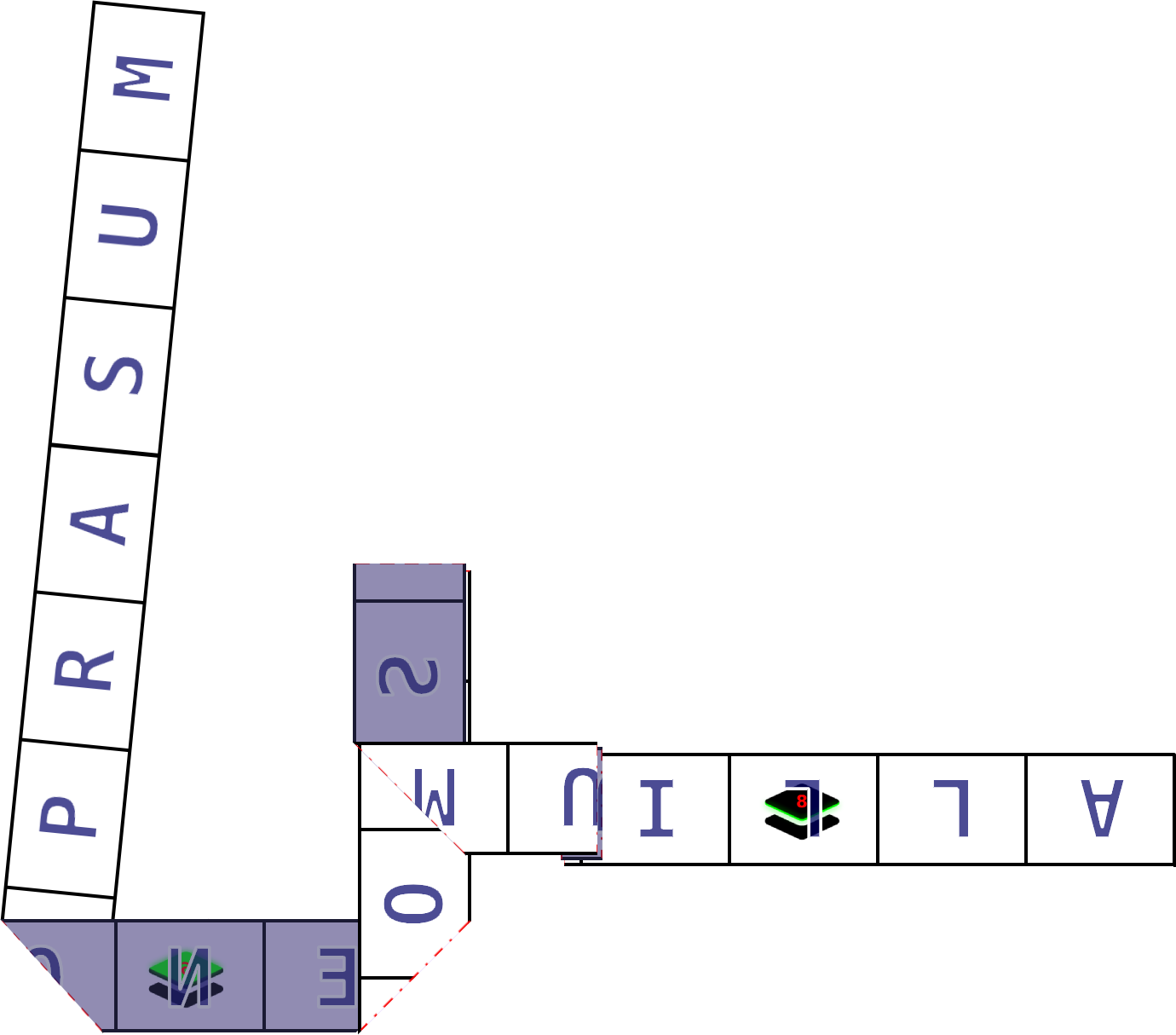 |
There are four kinds of symbols:



These are modeled after default layer symbols in digital art software, which implies that these will help us layer the strips. There are two of each number from 1 to 8 on these symbols, with one being on a green part highlighted on top 
 and the other being on a green highlighted on bottom
and the other being on a green highlighted on bottom 
 .
.
The red strip with Olea europaea gives us a break in on how to arrange the symbols – the  and
and  labeled with 2s face away from each other. Additionally, the green strip with Salvia officinalis has the
labeled with 2s face away from each other. Additionally, the green strip with Salvia officinalis has the  and
and  labeled with 7s kissing each other. This implies that symbols with highlights glowing downwards
labeled with 7s kissing each other. This implies that symbols with highlights glowing downwards 
 should face away from us, while the symbols with highlights glowing up
should face away from us, while the symbols with highlights glowing up 
 should face towards us. This also implies that colored sides should face us as well. Using this, we are able to layer our shapes:
should face towards us. This also implies that colored sides should face us as well. Using this, we are able to layer our shapes:
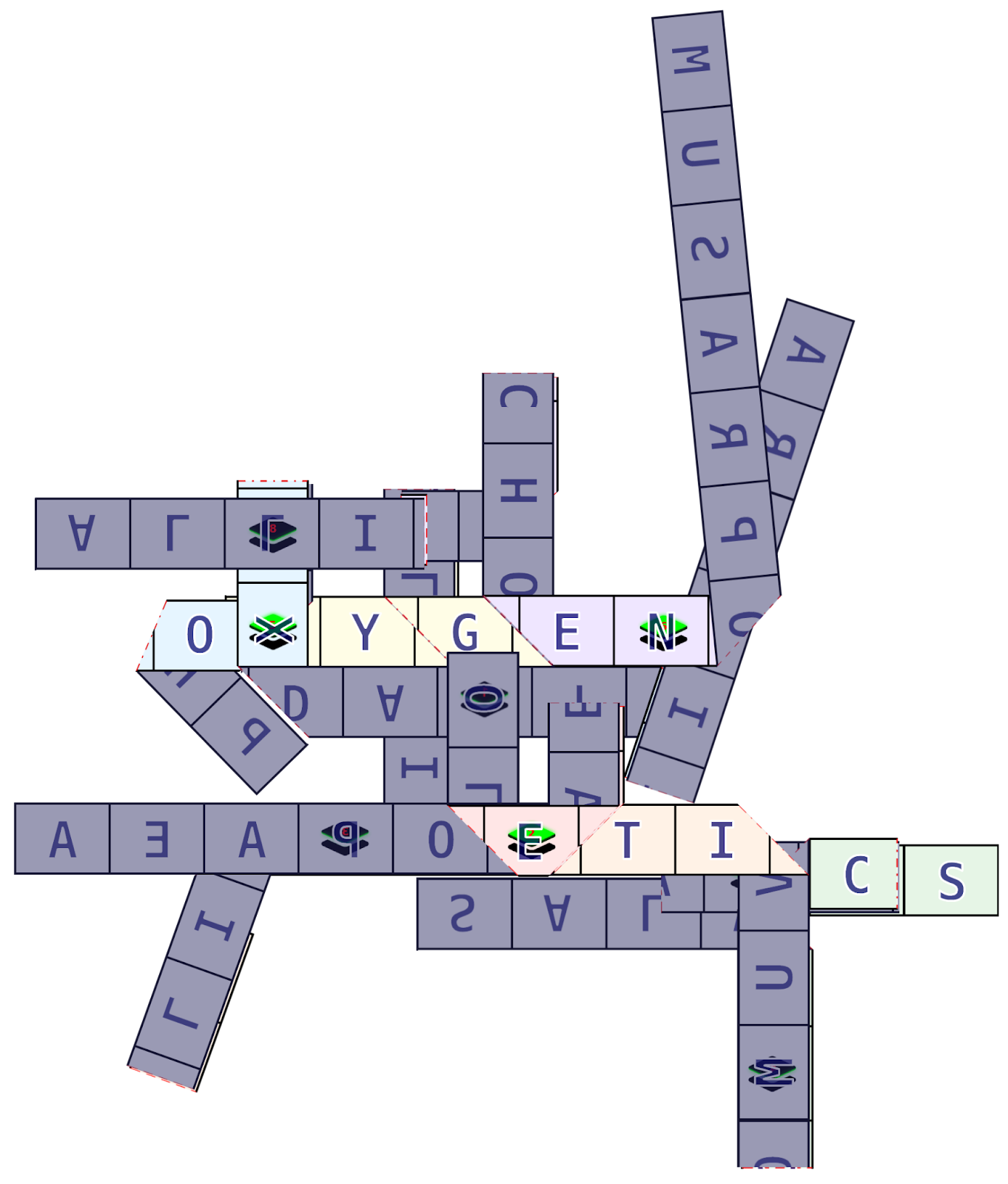
Reading the letters that are not covered and facing us, we get the answer OXYGENETICS.